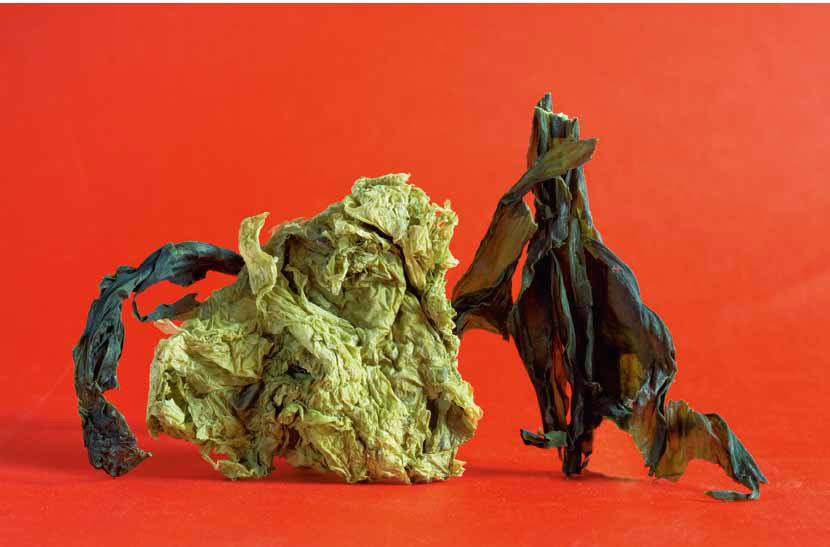


Many years ago, in the introduction to his landmark book The Kitchen Market, my great friend Paul Bocuse used a prescient sentence that really got me thinking: ‘These days, whoever wants to get on, must go round the world. And’, he continued: ‘Whenever I move to a new country, I return brimming with ideas.’ Our new food movement of the seventies captured this need and introduced – if only in an incipient way – the use of exotic algae, together with other products which are now almost common place.
In the Western world, sea vegetables have mostly been hailed for their medicinal properties to the detriment of their great culinary possibilities: even the ancient Greeks and Romans ignored them. Only along the coasts of Britain and the British Isles, has there been a tradition – for some thousand years – of consuming the algae that proliferate along these coasts, for example sea lettuce, which is sometimes added to oatmeal cakes.
By contrast, for over ten thousand years seaweeds have been an essential element in the diet of most Asian populations, particularly the Japanese, where there are extraordinary dishes that use different types of algae.
It is important to note that there are many kinds of algae and, not only does each have a different flavour and texture, but also a different culinary use. Thus, kombu, known as Laminaria gigante, is the basis of the delicious Japanese stocks, the dashi. Furthermore, when added to vegetables, it softens them and makes them more digestible. One of the best-known algae is perhaps nori, sold in sheets, and recognisable as a wrapper on the equally famous sushi.
And how can one not mention agar agar (Gelidium cantilagineum), a gelatineous red algae, very flexible and resilient despite its intricate branches. It is also known by the following names: agar, gelosina, vegetable gelatine, Chinese gelatine, and Japanese fish tail.
Its extract, also called agar agar, is colourless and tasteless, and absorbs water between 200 and 300 times its weight, forming a gelatine.
Culinarily it is important because it is a gel that maintains its gelling power when both warm and hot, which does not happen with other gelatines that only do so when cold.